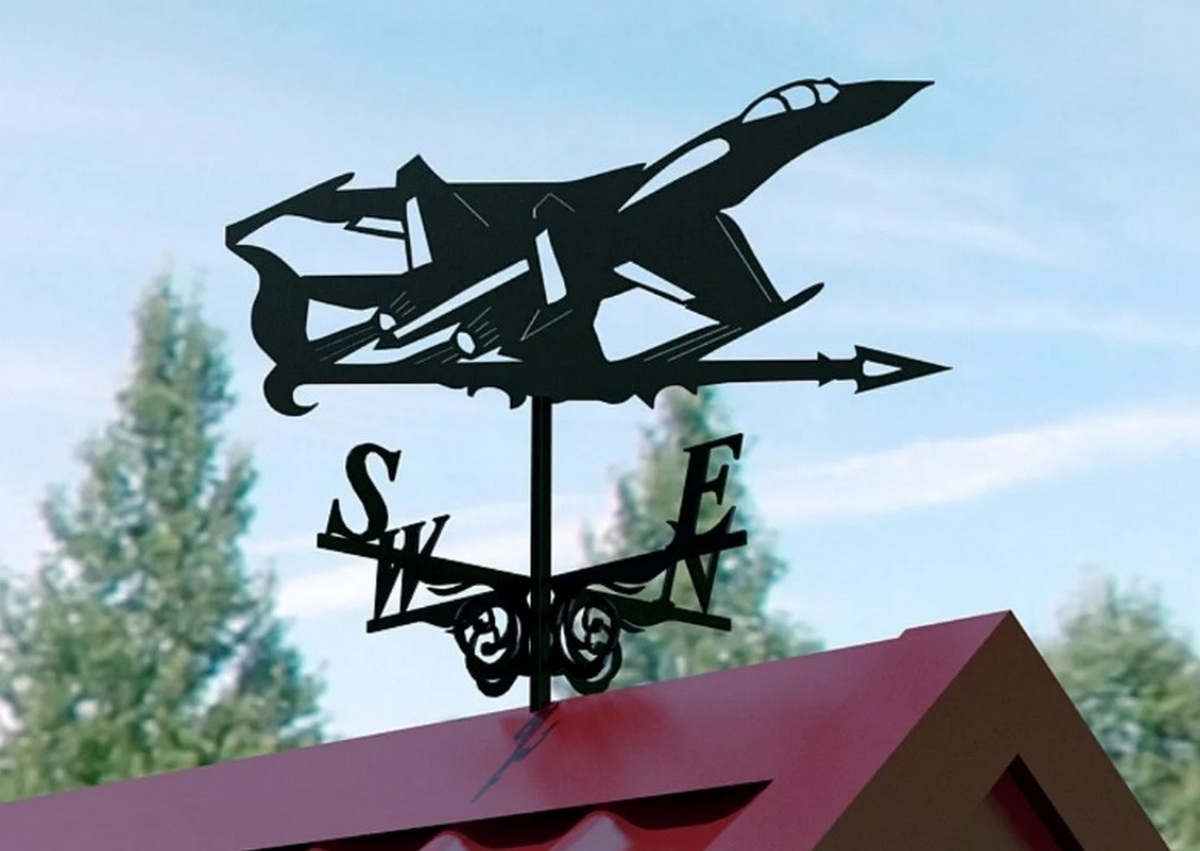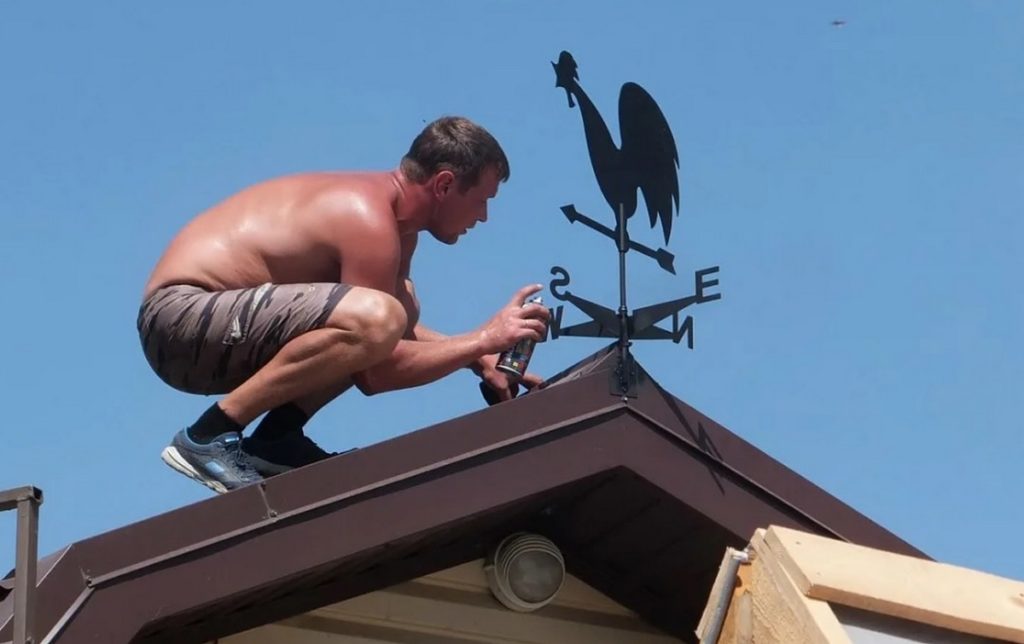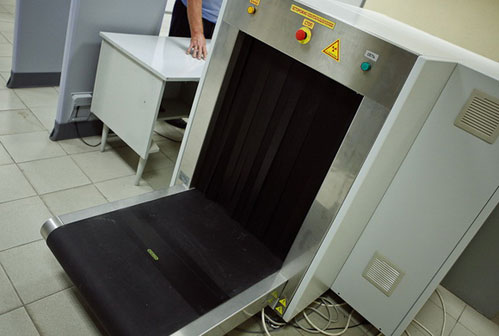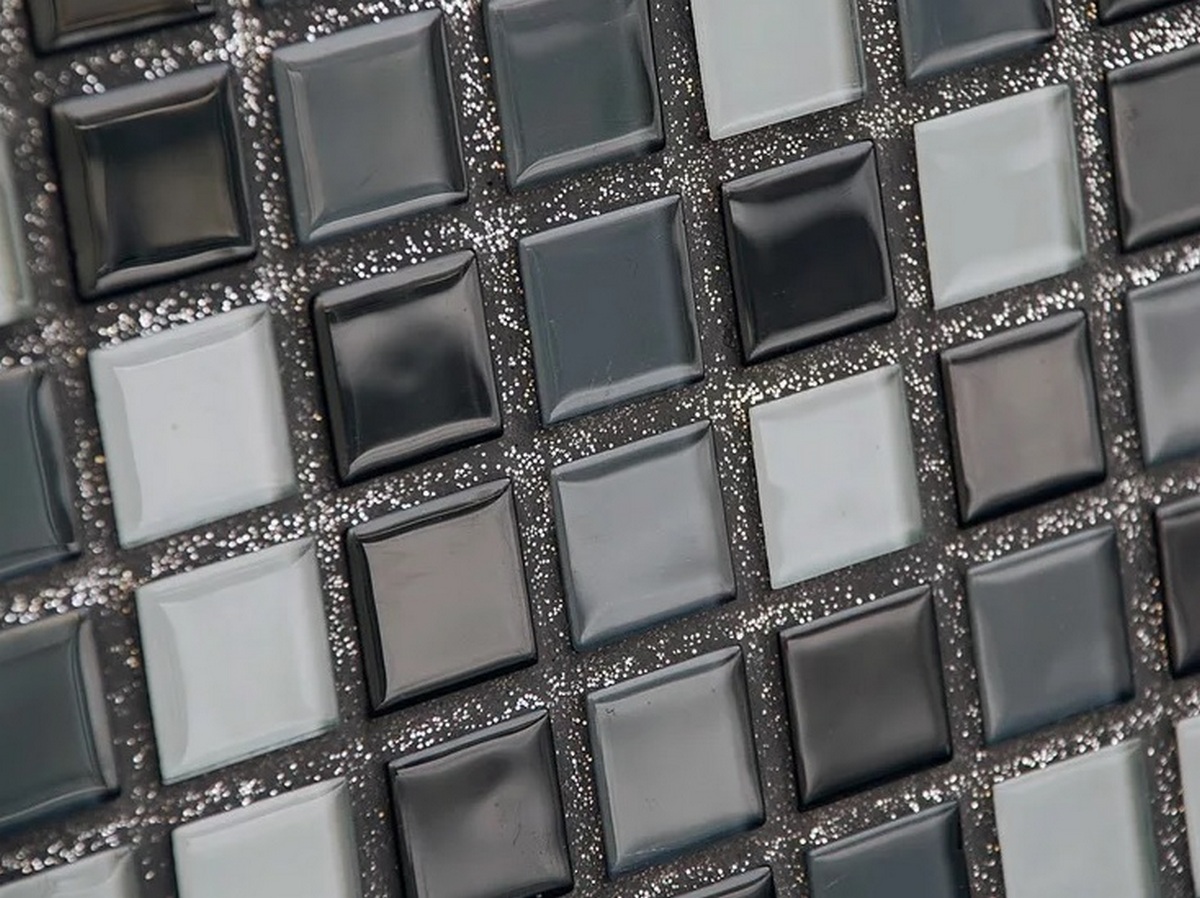Rating of the best weathervanes on the roof of the house for 2022

A weather vane (vertun, flag, anemone, weather vane) is a special device that is mounted on the roof of a house and performs some functions of both applied and decorative purposes. In most cases, it is used to determine the direction of wind currents. Some samples can not only indicate the direction of movement of air masses, but also serve as a lightning rod or protect the building from other negative weather factors. Weathercocks are a classic rooftop decoration in many European countries.

Content
- 1 Weather vane on the roof - general information and design
- 2 Modern types of weathervanes
- 3 Production materials
- 4 The best sizes for wind vanes
- 5 Flygarok - self-production
- 6 Rating of the best weathervanes on the roof of the house for 2022
- 7 Instead of an epilogue
Weather vane on the roof - general information and design
If we examine the etymology of the weather vane as a synoptic instrument through a historical prism, then this instrument has always been made exclusively of metal. However, in the modern world, it can be made of plastic or even wood. The use of metal as the preferred material is due to the fact that it has a greater margin of safety. Therefore, when choosing the material for the manufacture of this device, it is necessary to decide in advance whether it will carry an applied purpose or be a simple decorative decoration. Naturally, if only aesthetic tasks are at the forefront, then the material for making the weather vane will not play any role at all and it will be possible to make it even independently using any materials at hand.
Traditional weather vane models are structurally very simple and include the following components:
- checkbox;
- Axis;
- Frame;
- Pointer.
The flag is the most important decorative element. It is the flags that are made in the form of various shapes and figures. In the old days, each figure had its own meaning, which was important. For example, the scales meant the desire for equality and justice, the angels spoke about the high spiritual values of the owner, the lion symbolized power and authority. Also, these devices could be made in the form of coats of arms / standards of household owners, but this only applied to the nobility. Merchants or artisans were old on the weather vane to indicate their working specialization: the baker had a bagel, the blacksmith had a horseshoe, the innkeeper had a mug. So the devices in question served as a kind of advertising banners, informing people about the specialization of the activity or the product of their owner. In today's world, homeowners are more inclined to have animal or bird images or easily recognizable logos on their flags.
The axis in the design is necessary to hold the flag itself. In practice, a rod or a piece of reinforcement, having a length of about 50 centimeters, usually acts as an axis. It is on the axis that the flag is centered, which is fixed with the help of a special cap with the edge down or by means of teeth.
IMPORTANT! It should be understood that the axis passes through the entire structure, with its lower part resting against the bearing in the lower sector of the housing, which allows the device to rotate freely under the influence of moving air masses.
The body is a vane base and is located at the very bottom of the entire structure - under the indicators and the cap. It is preferable to make the body from a pipe with a wide hole diameter, and the length of the body should vary within the limits of 15 centimeters.Inside the housing, from below, there is a 9 mm closed bearing. Open bearings should not be used, because water can penetrate into the pipe and condensation can form, and this can easily damage the bearing.
Pointer - is an indispensable attribute of anemone and directly shows the direction of the moving air flow. The pointer is rightfully a separate functional element, because it is a simplified form of the "wind rose" - a pointer to all 4 cardinal points. As a rule, the first letters of geographical directions in Latin are placed on the tips of the pointers (N - north, S - south, W - west, E - east).
The overall size of the entire wind vane structure will directly depend on the location. If you need a simple garden ratchet made of plastic bottles, then such a model can simply be placed on a high pole. If you want to make it noticeable, then it is installed on the roof on a special spire with a height of up to 1 meter. This length will be sufficient for the visibility of the device from the ground, even at high altitude.
Modern types of weathervanes
It’s worth mentioning right away that spinners are not only a decorative item that adorns the roof. Their models may differ in their functions and, accordingly, design features. The devices under consideration are usually divided into wind and meteorological, as well as chimney and decorative.
Wind and meteorological
Meteorological models belong to the group of professional and scientific precision devices. Thanks to them, it is possible to determine the direction of movement and the strength of the wind flow, so their manufacturing technology is based on very high production standards.Accurate and high-quality weathercocks for the roof are correctly referred to as anemorumbometers. Similar products are installed far from private households, but at the structures of meteorological stations.
IMPORTANT! In the absence of proper knowledge and experience, as well as in the absence of special equipment, it is simply impossible to make an anemorumbometer!
Wind vanes for the roof correctly have "Wilde weather vanes" and they are used to determine the force of movement of the air flow (wind force). The design includes a special plate, which deviates to one side during the passage of the next gust. The Beaufort scale is used to designate the units of wind force measurement in the devices, according to which, each gust is assigned a set number of points out of twelve possible.
IMPORTANT! In Vilde weathercocks, the vertical plate constantly deviates to one of the sides, which attracts birds and reduces the accuracy of determining the readings received. To obtain accurate data on the strength of the wind, the plate can be replaced with a propeller. Its crackle will not only increase accuracy, but it will also scare away birds.
Decorative and chimney
Chimney models are installed directly on top of the chimney cap. With the help of such devices, it is possible to reliably protect the chimney from the ingress of excess air. Among other things, during a strong wind, thanks to the installed weather vane, the combustion products will leave the chimney as quickly as possible, while ventilation and draft will improve. As a rule, the described model is used if there is a fireplace in the house.
IMPORTANT! In most cases, the use of chimney winders is highly desirable for areas of the country where gusty winds often blow.
Decorative samples do not carry any applied value and can only emphasize the presentability and originality of the architectural forms of the building. Their design and construction are only limited by the imagination of the homeowner.
Production materials
A wide variety of materials can be used for the manufacture of the devices in question. It is the material that largely determines their appearance, general production technology, as well as service life.
wood and metal
Metal weathervanes are the most common. They have increased strength, are characterized by durability and are visually very presentable. Usually, steel sheets or sheets of copper alloys are used for their production. Most manufacturers offer fully finished products on the market, but if a suitable option cannot be found, then you can always contact a blacksmith shop to make an object "on order". Here it will already be possible to independently dictate both the configuration and dimensions, however, such a service will cost a little more.
Wood products have a slightly shorter, limited service life. Even additional processing of their case will not be able to significantly extend it, in comparison with their metal counterparts. However, in the production of such products, as a rule, there are no particular difficulties, because soft wood lends itself better to processing.
Non-standard improvised materials
In cases where the required sheet of iron or wood plate is not at hand, it is possible to make a spinner from improvised means. This will be a great opportunity to show others your individuality, creativity and design skills.The basis for the device can be flat plastic products, old CDs, other items that are no longer needed. Thus, improvised items can be given a “second life”.
The best sizes for wind vanes
The dimensions of the wind vane are selected taking into account the dimensions of the structure on which it will be installed. Its main purpose is that it should immediately “catch the eye”, but at the same time not look too bulky. If you plan to mount a weather vane on:
- A shed, a bathhouse, a gazebo, a garage (with a height of no more than 3.5 meters) - the spinner should be with a height of about 50 - 60 centimeters. Such dimensions will be enough for a high-quality review of it from a normal distance. However, outside the garden plot, it will be poorly visible;
- One-story house - for it, the size of the weather vane should vary from 60 to 80 centimeters, it will be clearly visible even from the roadway;
- A two or three-story house - for such a structure, the size of the weather vane must be at least 80 centimeters.
Flygarok - self-production
There are times when it is rather difficult to find the right weather vane among the samples offered on the market, and the services of a professional craftsman or blacksmith are extremely expensive. Thus, the vertun is quite possible to make it yourself. This will be an excellent opportunity to work out the sketch in detail, and if necessary, quickly make changes in the process.
Necessary materials and tools
The tools and materials that may be needed for self-production will directly depend on which weather vane and on what basis it is supposed to be created. The optimal list should include:
- Electric jigsaw - nozzles for it are selected based on the material on which to work, with the help of this tool the body and some decorative elements are cut out;
- Electric drill;
- soldering iron;
- A hammer;
- clamps;
- Sandpaper with coarse grain;
- Vise;
- Pliers or pliers.
If metal elements are expected in the structure, a welding machine, files of various grain sizes and a grinder may be required. Materials must always be selected individually. If it is supposed to use sheet metal or plywood, it is necessary to work immediately on a solid sheet that will be able to withstand wind loads. In any case, to perform the axis vertically, rolled metal will be required.
Making a stencil and body
The work is carried out in the following stages:
- First of all, when manufacturing the main element, a full-size stencil is printed on film or thick paper. The dimensions of the prepared image are related to the characteristics of the prepared sheet of material of manufacture.
- The stencil image is broadcast (transferred) onto a sheet of manufacturing material. It is necessary to move clearly along a linear contour, so that it is possible to maintain the proper shape and ideal ratio of all parts of the final figure. The sheet can be fixed or glued by any improvised means.
- The resulting figure should be carefully cut using the appropriate tool.
- Next, the blades of the desired size and parameters are cut out from the trim of the metal pipe. Before installation, they are integrated with a special fastener.
Production of a rotary axis
For the manufacture of this element, you can use old auto parts or standard rolled metal. If old auto parts are used, then the following are to be connected in series:
- Metal tube with a diameter of 15 millimeters;
- Shock absorber rod (the best option is from a Volkswagen Golf car);
- Hub from a motorcycle brand "Minsk";
- A mechanism for tensioning the belt, which is fixed on the hub using an eyelet. It will provide protection against strong gusts;
- Rotary part fixed on the hub.
Installing a weather vane on the roof - work technology
The procedure for final installation on the roof depends on the location of the fixing. Work must be performed in the following sequence:
- In a special vice, it is necessary to bend the main plate at a right angle;
- Similarly, it is required to bend the stiffening plate at an angle of approximately 135 degrees;
- The remaining edges are also bent, but in such a way that they form an angle equal to or very close to the angle of the roof slope;
- A vane rod with a fastening part and a stiffening plate is successively fixed to the universal fixture;
- In the end, the weather vane is carefully attached directly to the roof, and it is necessary to control its spatial position.
Rating of the best weathervanes on the roof of the house for 2022
Budget segment
3rd place: "Flower Windmill"
This anemone belongs to the category of the simplest and can be installed both on the roof of the house, and simply stuck into the ground. Production material - plastic, ratchet, made in the form of a disk of sunflower, is attached to a long rod. The total height of the entire structure is 60 centimeters. Various color variations are on sale. The recommended retail price is 165 rubles.

- Placement variability;
- The presence of a ratchet;
- budget cost.
- Insufficient strength.
2nd place: "Scarecrow-Anticrot Dog Sudogodskoye"
This anemone-antikrot is used to protect shrubs, fruit plantations and crops from birds and rodents, it is also able to decorate a garden plot. Among other things, it is able to show the direction and strength of the wind. Installed rattles are designed to scare away not only birds, but also moles. It is preferable to use for installation on a pole in the ground, however, it can also be used for a roof. Very easy to install. The recommended cost for retail chains is 1100 rubles.

- Versatility;
- Dual purpose;
- The presence of a ratchet.
- Not recommended for rooftop placement.
1st place: "Weather vane Rooster Kukareku small"
With the help of this device, it is possible not only to determine the direction of the wind, but also to transform the design of the roof of the structure. Recommended for installation in a high and open place on the roofs of towers, gazebos and buildings. The product is made of sheet metal with a thickness of 1.5 mm, and the entire surface is treated with anti-corrosion paint. The product includes a fixed spire, cardinal pointer and flag. Black color. The recommended cost for retail chains is 1160 rubles.

- Anti-corrosion treatment of the body;
- Rugged housing;
- Proper thickness.
- Fixed capstan without bearing.
Middle price segment
3rd place: "Small weather vane "Vedmochka", VYATSKIE sleigh, 390×280 mm., 84544"
This product is made of 1.5 mm thick sheet steel, covered with black powder paint to prevent corrosion. Designed to decorate the roof of a country house. The drawing is thematic and has a symbolic meaning. Fastening takes place with the help of self-tapping screws by means of stem petals. The device rotates very smoothly, does not emit extraneous squeaks, due to the presence of a metal bearing in the design. The recommended cost for retail stores is 1320 rubles.

- Original design execution;
- The bearing blocks an unpleasant squeak;
- Durable manufacturing material.
- Not detected.
2nd place: "Dragon-1 small 360*270"
This device has a flag size of 350 by 270 millimeters, the entire size is 650 by 300 millimeters. The set includes: the flag itself, a rotational axis, a bracket for mounting on the roof, installation instructions, pointers for cardinal directions (N-S-W-E). Additionally added grease for the connecting fasteners of pointers for cardinal directions. The material of manufacture is 1.5 mm metal. Powder coated, black light. The recommended price for retail chains is 1600 rubles.

- Anti-corrosion treatment of the body;
- The presence of pointers;
- Good equipment.
- Not detected.
1st place: "PALITRA TECHNOLOGY Witch 52909"
This accessory will add coziness and individuality to any home, cottage or bathhouse. It is made of structural steel grade ST-3, which means a special durability of the material without the risk of suffering from corrosion manifestations.The thickness of the product is 2 mm. Polymeric powder coating guarantees extended service life. A special fastening allows you to mount the weather vane on the roof ridge, under its overhang or on a hipped roof. The design provides a seamless rotational system reduces the friction of the working parts against each other, which prevents the manifestation of an unpleasant squeak. The device itself is securely and firmly attached thanks to the deep seat and the hub on the axle, which is characterized by extreme stability even in strong winds. The recommended retail price is 2880 rubles.

- Anti-corrosion treatment;
- Thick body;
- Seamless rotation system.
- High price.
Premium class
3rd place: "GLORI ir Co. Chimney Sweep"
This product is designed to measure the direction of strong air currents. In the production, laser cutting technology was used, so the product is of high quality. Exquisite design will give the roof of the house a complete look. The body is covered with powder paint, which can successfully resist corrosion. The recommended retail price is 2900 rubles.

- Light weight;
- Graceful design;
- Reliable fastening.
- High price.
2nd place: "GLORI ir Ko Knight"
Laser cutting technology provides this product with high quality. Designed to determine the direction of the wind. The device is easy to install. It has an elegant design and is light in weight. Made of durable metal and securely mounted on the roof. The recommended retail price is 3500 rubles.

- Laser manufacturing technology;
- Reliable fastening;
- Beautiful design.
- High price.
1st place: "Pegasus 870x700 with universal mount"
This sample has a universal mount, which allows you to fix it in almost any place, i.e. both on a flat surface and on a roof ridge. The body is made of 2 mm thick steel, which does not allow it to bend from strong gusts of wind. During operation does not require regular lubrication and maintenance. The design is characterized by a special strength, due to the presence of additional fixing fasteners. The recommended retail price is 5200 rubles.

- Universal mount;
- Additional fixing fastener;
- Does not require permanent maintenance.
- Extremely high cost.
Instead of an epilogue
The analysis of the market of the products under consideration established that it is almost completely represented exclusively by the Russian manufacturer. This circumstance is due to the fact that the device is not characterized by a particular complexity of manufacture. However, the prices for spinners can be quite high, this is due to the fact that high laser cutting technologies are used in the production. At the same time, powder coating the hull of the weather vane (in order to prevent corrosion) has become commonplace. The wind vanes themselves are very easy to install and do not require any special maintenance. If the prices for windvanes seem too high, then it is always possible to make them yourself using improvised materials, thereby notably saving on any costs.
new entries
Categories
Useful
Popular Articles
-

Top ranking of the best and cheapest scooters up to 50cc in 2022
Views: 131649 -

Rating of the best soundproofing materials for an apartment in 2022
Views: 127688 -

Rating of cheap analogues of expensive medicines for flu and colds for 2022
Views: 124517 -

The best men's sneakers in 2022
Views: 124031 -

The Best Complex Vitamins in 2022
Views: 121938 -

Top ranking of the best smartwatches 2022 - price-quality ratio
Views: 114978 -

The best paint for gray hair - top rating 2022
Views: 113393 -

Ranking of the best wood paints for interior work in 2022
Views: 110318 -

Rating of the best spinning reels in 2022
Views: 105327 -

Ranking of the best sex dolls for men for 2022
Views: 104363 -

Ranking of the best action cameras from China in 2022
Views: 102214 -

The most effective calcium preparations for adults and children in 2022
Views: 102010









